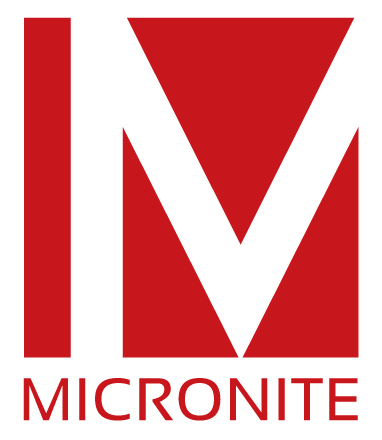Knowledge-based process control
MICRONITE COURSE OUTLINE
Course OVERVIEW
Broad-spectrum. Practical and theoretical courses cover all the essentials of process and quality control related to CNC equipment and machining /grinding of precision components. It covers MICRONITE software tools developed for advanced control and optimization of turning, milling, screw machining and other kinds of operations with perishable tools. MICRONITE is capable of controlling the entire process and its multiple components starting from the measuring device, through CNC machine and tooling, right down to primary control elements of operator actions and finally to engineering corrective actions. It covers control plan development that needs to be carefully matched to the process to work optimally. Control plans that are not correctly tuned to process specifics do not reduce variability in the process and do not reduce the risk of defects in product quality.
Learning Experience. MICRONITE courses are aimed at diversified team members: machinists and instructors who will train further machinists , supervisors to have a clear, practical understanding of the essentials of zero-defect process control, and engineers to be able quickly and effectively use visual machining analytics for process improvement . Mathematical theory has been kept to a minimum with the emphasis throughout the courses on principles of machining, practical applications of the MICRONITE system, and useful information provided by the software. The courses are designed to continually improve performance of workforce with a full range of training options from Expert Manufacturing Systems. With these courses, instructors will train new hires, improve current workforce skills, and help engineering teams adapt to new MICRONITE technology. Focus on a customer. With MICRONITE courses, you will be able to train anyone in your company on the proper techniques for achieving proper resolution of any type of problem, whether it be a difficult-to-control close tolerance process, operator discipline, manufacturing engineering issue, quality-related incidents, etc. We do not speak in general terms. We use knowledge of your company’s major achievements and problems to elaborate on the material we have put together. Unless you can show how process and quality data relate to actual issues that your employees deal with, you will have a hard time making much of an improvement in the way problems are resolved. The main course “MICRONITE-based control of machining processes and product quality” has been divided into three parts:
Part 1. Basics of machining control
Part 2. Fundamentals of process and quality control with MICRONITE
Part 3. Advanced control and optimization of machining operations
Section 1. What is MICRONITE?
• MICRONITE is a suite of process control solutions to help discrete part manufacturers improve quality and increase efficiency
• What can a company achieve with MICRONITE?
• MICRONITE foundation
• Getting started with MICRONITE
Section 2. Operator Workstation
• Loading the Part Folder
• Starting the Shift
• Starting the Sublot
• Track(iTrack)_Tool_Bar
• Inspection_Manual_Entry
• Inspection_Automatic_Import
• Inspection Auto Import CMM-Oasis
• Recording a Process Action
• Ending the Job
• Accessing the Blueprint
Section 3. Process control introduction. Basic terms and definitions.
• Process variables: machine precision, tool signature, tool wear, thermal conditions, coolant
• Measurement devices: hand gages, CMM, Vision Systems
• Process output: classification of blueprint characteristics by type, tolerance and functionality
• Specifics of process input and output related to a company manufacturing environment
Section 4. Resources to begin MICRONITE Journey.
• Main system components: structure of data acquisition, basic analytical tools, types of workstations, networking
• Process control line: data analysis and representation
• Quality assurance line: distributional and non-distributional estimates of on-line and offline data
• Justification for knowledge-based control of machining vs. conventional statistical control
• Control panels and user-aimed interfaces
• Decision making mechanisms applied to system configuration
Section 5. General principles of machining control with MICRONITE
• Types of machining processes
• Mechanics of tool wear: single-point tools, hole making tools, multi-functional tools.
• Sample location, variation, and probability of defects
• Process location and process variability
• Causes of process instability
• Sampling inspection for tool wear simulation and process control
• Focus on control of machining operations typical for Hypertherm environment
Section 6. Job/operation identification
• Structure of database and job identification fields
• Content of a part folder
• Automated download of CAD files and manual drawing identification
• Classification of characteristics
• Assignment of dimensional characteristics to cutting tools
• Comprehensive process sheets
Section 7. Control plan development
• Six components of MICRONITE inspection plan
• Types of predictive control models, symmetrical and asymmetrical modes, control levels
• System-controlled adaptive sampling frequency and fixed sampling intervals
• Good practice for class-based process modeling and inspection planning
• Company experience in optimization of control plans
Section 8. Multi-disciplinary data acquisition
• Manual data entry
• Automated data capture with CMM and Vision Systems
• Real-time actions recording and offset notes
• Tool life and wear mode data acquisition
• Examples of correct in-process and offline data acquisition
• Typical mistakes in data acquisition
Section 9. Specialized methodology of MICRONITE Measurement Assurance
• Structure and components of MICRONITE metrology suite
• Advantages of MICRONITE vs conventional R&R
• Discovery of systematic and random measurement errors
• Validation of measurement equipment for control of close-tolerance characteristics
• Certification of operators and inspectors
• Assessment of elements of cumulative measurement capability
• Creation of plant-wide metrology database
• Part-specific validation of measurement capability
• Periodic audits of measurement accuracy and precision
Section 10. Section 10. Learning MICRONITE interfaces
• Control panel Inspection Track (iTrack)
• Customizable layouts of process action charts
• Process status after last sample
• Control panel Process Track (pTrack)
• Control panel Group Track (gTrack)
• Control panel Tool Track (tTrack)
Section 11. Understanding a machining process with MICRONITE visual interfaces
• Placing a tool-and-quality image on the drawing
• Representing dynamics of machining process on the drawing
• Viewing parts of drawing with MICRONITE
Section 12. Low-risk quality certification with MICRONITE
• Advanced analytics of in-process acceptance of product quality
• Customizable layouts of Total Quality Assessment
• Quality acceptance certificates per shift, sublot, multiple sublots, and job
Section 13. Recognition of contributing components of process capability
• Conventional capability studies and indexing by CP and Cpk
• Effects of form variation and measurement errors
• Tool capability to hold multiple tolerances
• Validation of equipment capability and historical capability database
Section 14. Data analysis and process improvement with MICRONITE.
• Advanced data filtering to identify TOP-Focus tools and characteristics
• Automated analysis of process actions outcome
• Operation view by tools and characteristics
• Simplified Six Sigma data analysis
Section 15. Process and quality improvements
• Enforcement of inspection discipline
• Improvement of process stability and product quality
• Reduction of inspection time
• Reduction of stoppages and increase of production efficiency
Section 16. Creating the advanced manufacturing environment
• Company team building around MICRONITE
• Equipment- and product-specific configurations of MICRONITE stations
• Continuous improvement of operators’ skill
• Consolidation of process and quality engineering projects
• Data-driven operators’ performance analysis


